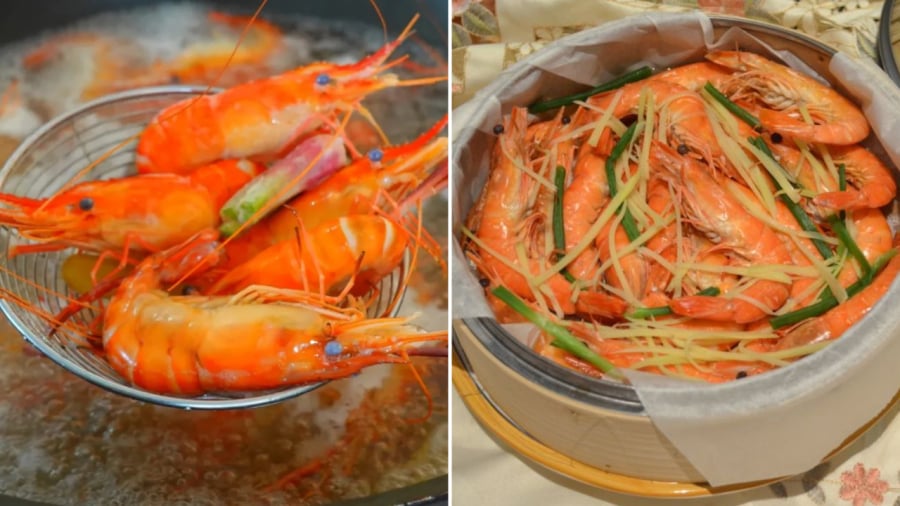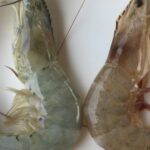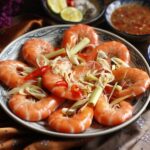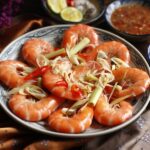Boiling and steaming are healthy cooking methods that preserve natural flavors and retain nutrients. For shrimp, you can choose either of these methods. Many people believe that these two cooking methods yield the same results. In reality, there are subtle differences between boiled and steamed shrimp.
Advantages and Disadvantages of Boiling Shrimp
When boiling shrimp (or any other food), you place the ingredients directly into the water to cook. Depending on the dish, you may need to add the ingredients to cold or boiling water. For shrimp, it is common to wait for the water to heat up before adding them to the pot. This ensures that the shrimp retain their natural sweetness. If shrimp are added to cold water, the prolonged boiling time can cause a loss of sweetness and nutrients. Overboiling can also make the shrimp tough and dry.
In Eastern medicine, boiling is considered a method that helps reduce excess heat in the body and clear heat from the system. During hot weather, like summer, boiled dishes such as boiled vegetables and meat are often preferred.
One downside of boiling is that it can lead to a loss of certain nutrients such as beta-carotene, vitamins B1, B2, C, and some minerals. For shrimp, in particular, overboiling can cause the meat to lose its sweetness and become tough and dry.
Since the food is submerged in boiling water, boiled dishes generally cook faster than steamed dishes.

Advantages and Disadvantages of Steaming Shrimp
Steaming also uses water to cook food, but it differs significantly from boiling. Steaming utilizes the hot vapor rising from a pot of boiling water to cook the food. The ingredients are placed on a steamer basket, rack, bowl, or plate and do not come into direct contact with the water. As the water boils, it changes from a liquid to a vapor. This hot vapor rises and gently cooks the food. Since the food is not immersed in water, steaming helps retain the natural color, flavor, and nutrients of the dish.
For shrimp, steaming ensures even cooking, preserves the natural flavor, and minimizes nutrient loss compared to direct boiling. The temperature during steaming is usually maintained around 100 degrees Celsius, avoiding the higher temperatures associated with frying or stir-frying. This makes steaming a healthier option that reduces the formation of harmful compounds.
Shrimp and other seafood like squid and fish are quick to cook, so steaming is an excellent way to retain their natural sweetness and nutrients.
In practice, the choice between boiling and steaming shrimp depends on personal preference, taste, and available resources. Depending on your circumstances, you can choose the most suitable cooking method. Regardless of the method, it is essential to select fresh shrimp with firm meat and no odd odors. Fresh shrimp will have a natural sweetness and firmness when boiled or steamed, and they won’t taste fishy. Additionally, pairing shrimp with ingredients like ginger, scallions, and lemongrass can enhance the aroma and flavor of the dish.






































